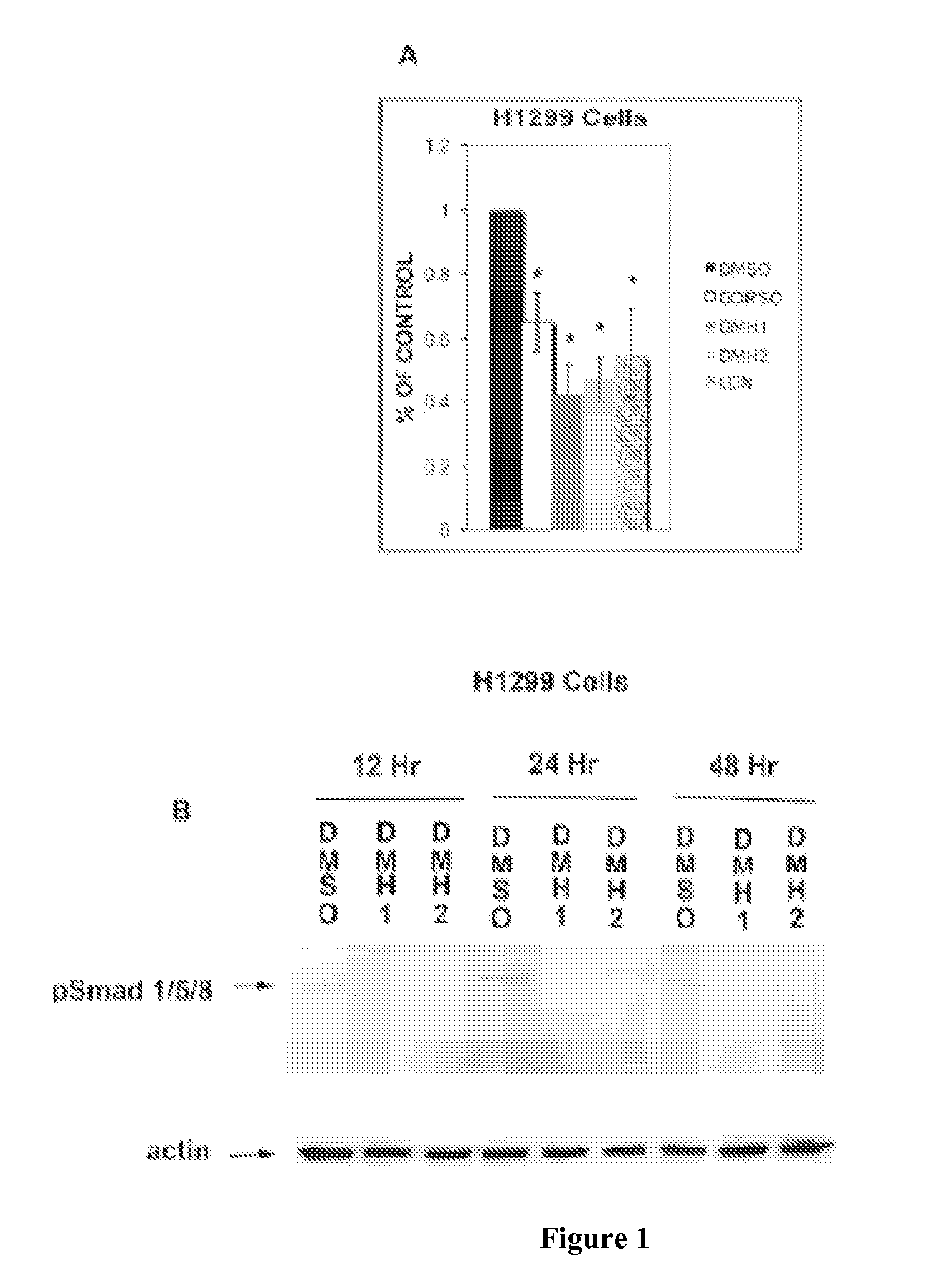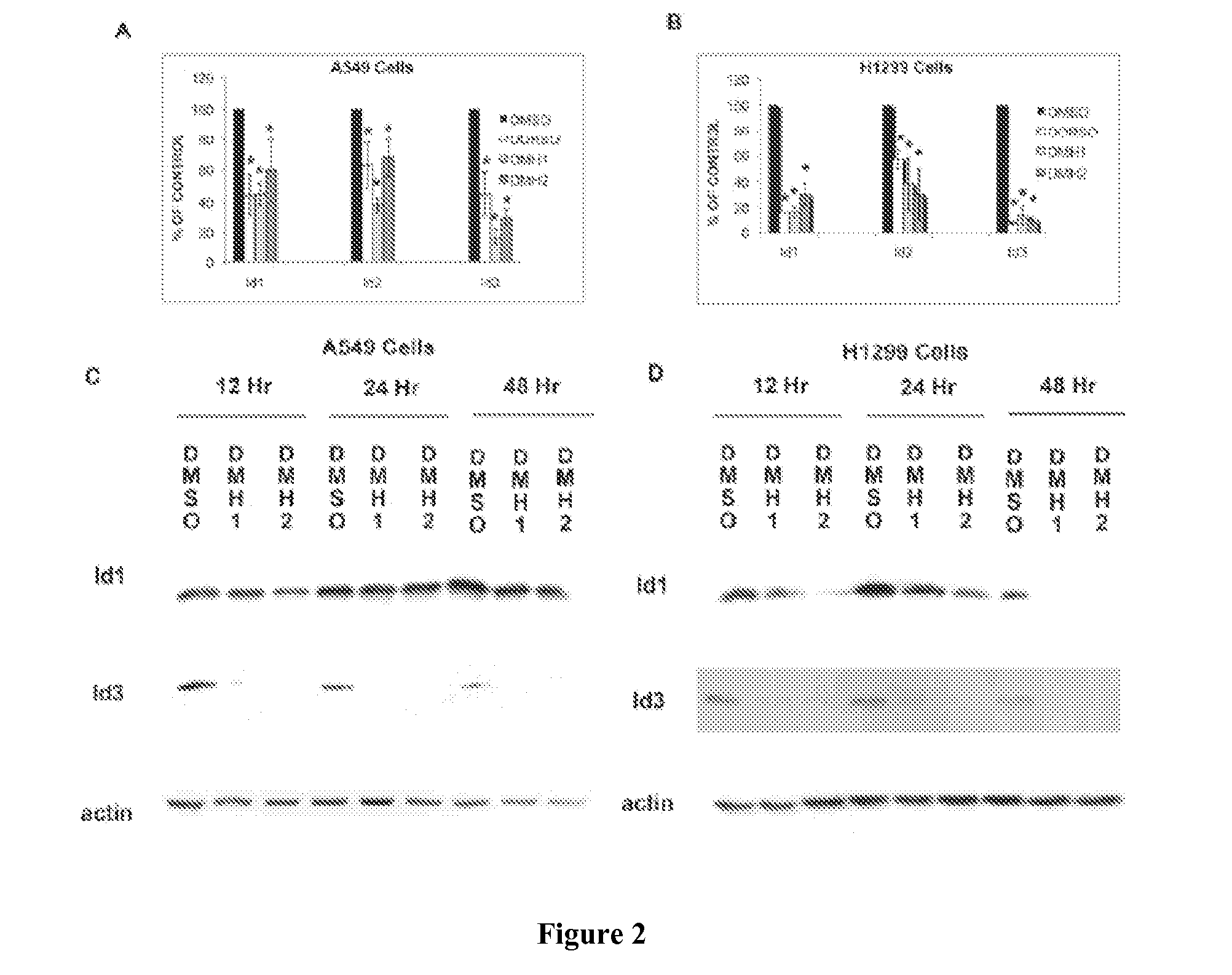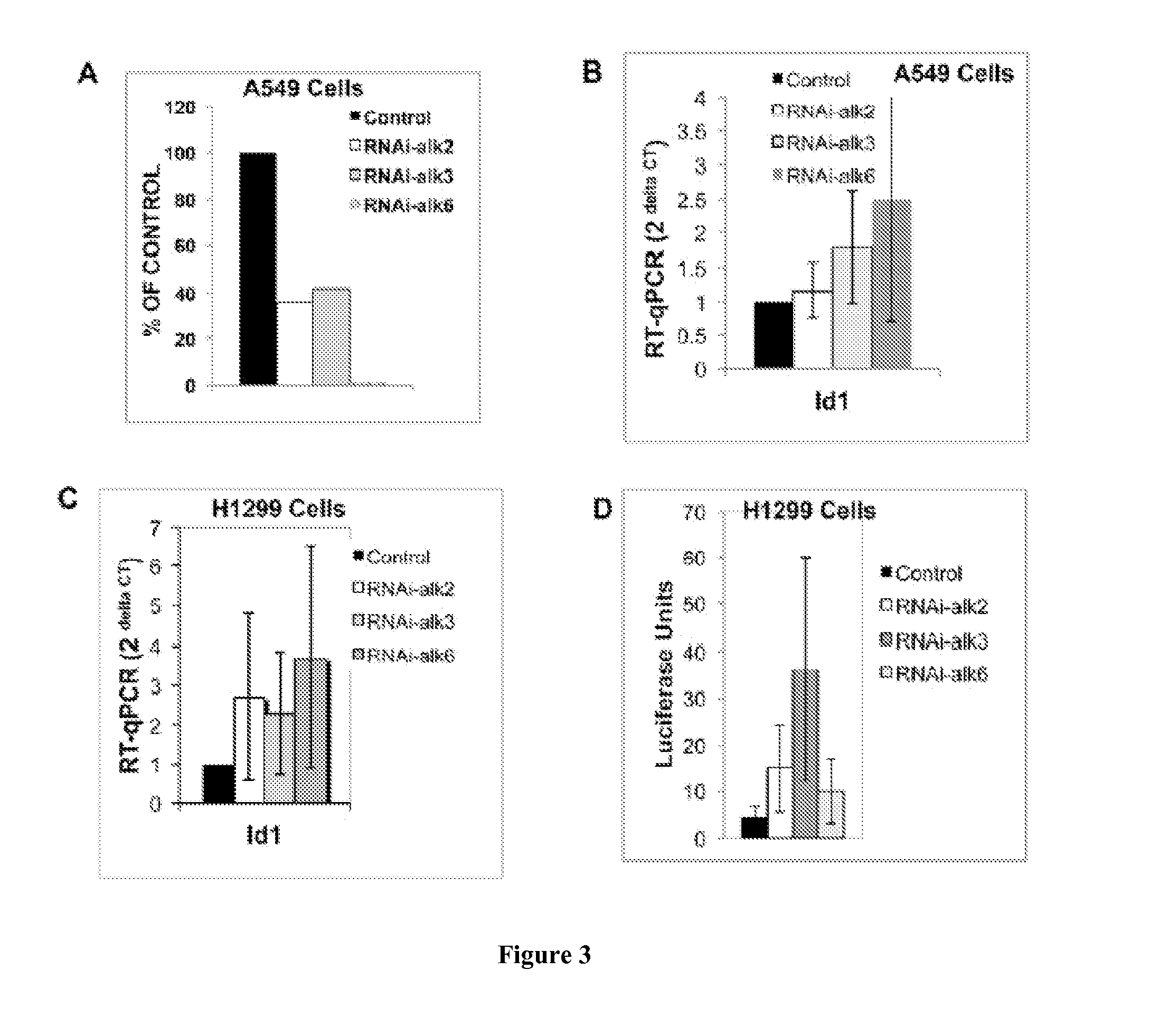Cancer treatment using bmp inhibitor
a technology of bmp and inhibitor, which is applied in the direction of biocide, drug composition, therapy, etc., can solve the problems of insufficient understanding of the effect of bmp on self-autonomous cell growth and survival, difficult inhibition of this signaling pathway, and insufficient evidence of promoting cancer cell growth and/or survival, etc., to achieve effective inhibition, promote cell death, and promote cancer cell death
- Summary
- Abstract
- Description
- Claims
- Application Information
AI Technical Summary
Benefits of technology
Problems solved by technology
Method used
Image
Examples
example 1
[0075]As disclosed herein, it has been determined that certain small molecule BMP inhibitors can inhibit the function of a specific set of receptors found on cancer cells, thus promoting cell death. These small molecule antagonists specifically block the BMP signaling cascade that is active in many cancers. They further decrease cell growth and induce cell death of cancer cells and provide a direct link between this signaling pathway and the promotion growth and / or survival in cancer cells. Thus the presently-disclosed subject matter provides for a unique method of regulating cancer cell growth and survival, and identifies compositions and compounds useful for treatment of cancer and / or useful for regulating cancer cell growth and survival.
[0076]As disclosed herein, bone morphogenetic protein 2 is highly expressed in the majority of lung carcinomas. There are at least 14 other family members, which include BMP-4, BMP6, BMP7, and GFD 5. BMPs are expressed in many other tumors includi...
example 2
[0092]The Bone Morphogenetic Proteins (BMPs) are members of the Transforming Growth Factor superfamily (TGF). BMPs are phytogenetically conserved proteins required for embryonic development from insects to humans. Approximately 20 BMP ligands have been identified and categorized into several subclasses. BMP-2 and BMP-4 share 92% homology and have interchangeable biological activity. BMPs are secreted proteins that signal through transmembrane serine / threonine kinases called type I and type II receptors [1]. The type I receptors are alk1, alk2 (ActR-1), alk3 (BMPR-IA), and alk6 (BMPR-IB) [1]. The type II receptors are BMPR-II and activin type II receptors ActR-II and AcR-IIB [1]. BMP receptors are promiscuous, and can be activated by several BMP ligands [1,2]. Each BMP ligand is also capable of activating different receptors [1,2]. Binding of the BMP ligands to the type I receptor leads to phosphorylation by the constitutively active type II receptor. The receptor complex phosphoryla...
PUM
| Property | Measurement | Unit |
|---|---|---|
| size | aaaaa | aaaaa |
| molar ratio | aaaaa | aaaaa |
| time intervals | aaaaa | aaaaa |
Abstract
Description
Claims
Application Information
 Login to View More
Login to View More - R&D
- Intellectual Property
- Life Sciences
- Materials
- Tech Scout
- Unparalleled Data Quality
- Higher Quality Content
- 60% Fewer Hallucinations
Browse by: Latest US Patents, China's latest patents, Technical Efficacy Thesaurus, Application Domain, Technology Topic, Popular Technical Reports.
© 2025 PatSnap. All rights reserved.Legal|Privacy policy|Modern Slavery Act Transparency Statement|Sitemap|About US| Contact US: help@patsnap.com



